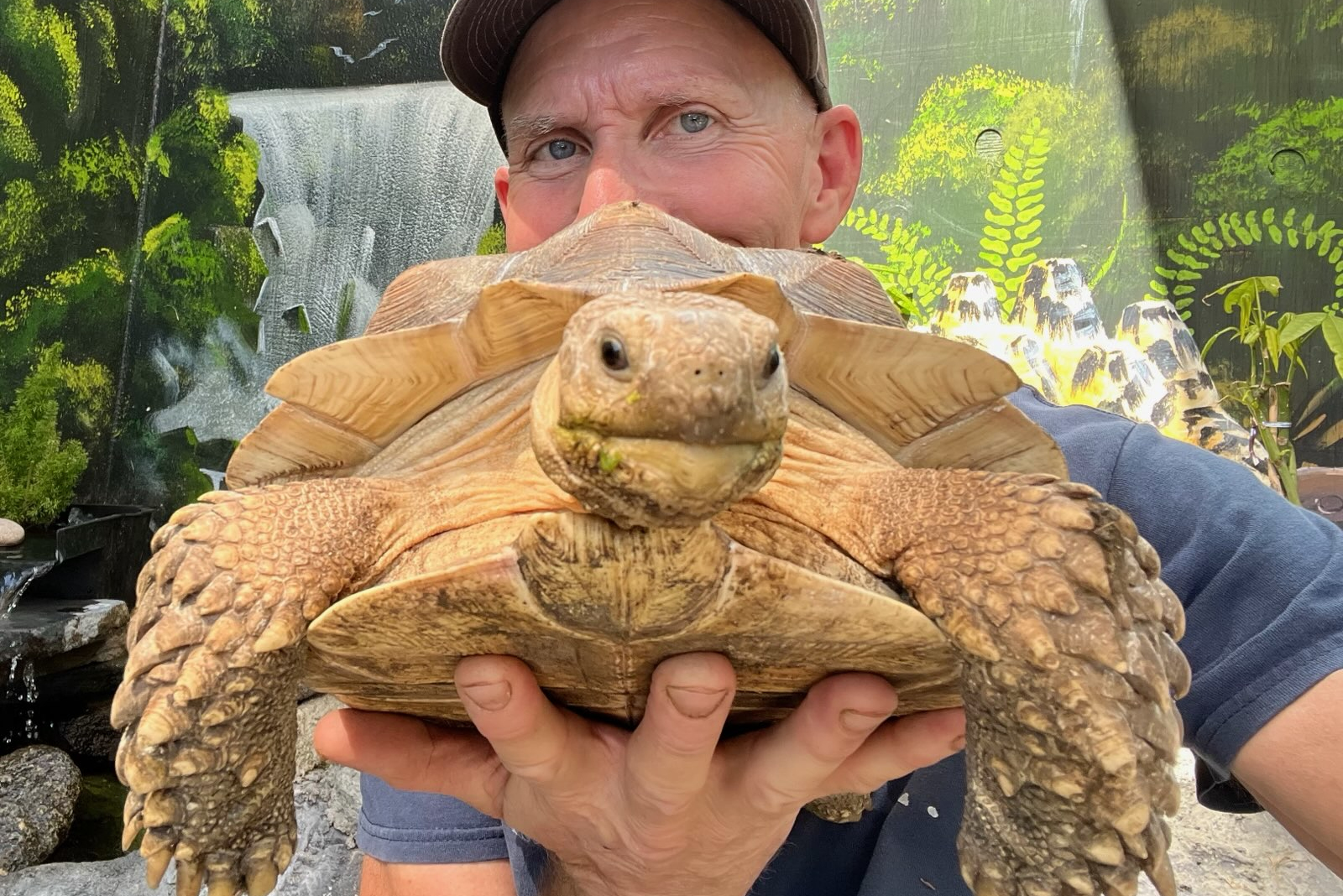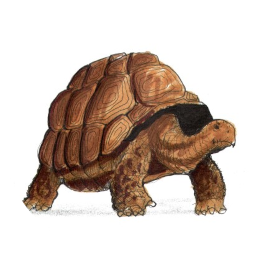Meet Mario The African Sulcata
Mario and TheTortoiseGuy Kevin at TortoiseLand!
What is Going On With Mario?
Hello TortoiseLand supporters! Today, I would like everyone to hear a story about three-year-old Mario, a beautiful female African Sulcata, who has been through quite a bit in her young life. Recently, she suffered a bladder stone blockage. There are many reasons this could have happened, and unfortunately, this was one of the more painful experiences for the poor lady Mario.
She was surrendered to TortoiseLand by a wonderful guy who unfortunately was not prepared for her juvenile and adult size. I would like to remind everyone that if TortoiseLand has the resources and space to do so, we accept surrendered Chelonians (tortoises, turtles, and terrapins), judgment free, and with open arms.
About The African Sulcata
Kevin and Mario at TortoiseLand
African Sulcatas rank as the 3rd largest tortoise species to currently exist, native to Northern Africa. They have many different names, such as African Spurred tortoise, Desert Sulcata, etc. They live in the savannas and grasslands of North Africa. African Sulcata tortoises will dig burrows to stay cool from the sun, and hide away from the outside world. These tortoises have very few natural predators, their biggest ones being birds, and humans.
The Sulcatas are wonderful tortoises, however, their sizes from hatchling to adult are dramatically different. Hatchlings are about an inch and a half in length,weighing nothing more than a ping-pong ball. Adult Sulcatas vary in size, most making it to be anywhere from 10-30 inches in length. Many Sulcata tortoises will weigh over 100 pounds by their full adult size. The best way to ensure proper growth of any tortoise, turtle, or terrapin, is to make sure they are getting proper UV rays from a lamp AND sun, as well as a proper diet.
African Sulcata tortoises are prone to getting something called bladder stones. Most tortoise species have been reported to develop them, and any tortoise species can develop them. These stones can range in size, and can be very painful for a tortoise to pass. It is important that these stones are removed or passed as soon as possible; death can occur when left untreated.
Lets See Mario’s Stone
Mario and her bladder stone, photo taken by TheTortoiseGuy.
Mario had a really hard time passing her bladder stone. She would make helpless cries of pain as it was making its way through her urethra. Fortunately, she was able to pass the stone on her own, and did not require surgery. These stones are painful for tortoises to pass, no matter what size they get to be. If they do not require surgery for removal, it is best to soak them in skin temperature water (about 75-85 F°) for 30 minutes a day, twice a day, until the stone has passed. If you are able to, please go to a vet for exotic animals and reptiles, so they can assess the situation, and make sure that your tortoise is provided the best possible care that they can receive.
Here are two videos of Mario’s Bladder stone, from Kevin the Tortoise Guy, at TortoiseLand:
You Won’t Believe What Came Out of Mario the Tortoise! (Part 1 of 2 videos)
Huge “ROCK” inside litte MARIO could have killed her ( Part 2 of 2 videos)
Dangers of These Bladder Stones
If you listened to Mario’s cry, you will know that these things can be excruciatingly painful. The stone can stretch out organs, and cause tearing depending on the size. Most tortoises that are feeling moderate to mild discomfort will lift up their rears, or cry out when they feel the stone trying to pass. The worst part about these stones, is some tortoises will not show any symptoms of suffering from a bladder stone, and will be near death. The number one cause for bladder stones in Sulcata tortoises is dehydration.
How To Prevent Bladder Stones
Preventing Bladder stones in Chelonians is as simple as keeping them hydrated. While you will rarely see your tortoise, turtle, or terrapin drink water, that does not mean they should not have access to fresh water daily. Their UV lamps can evaporate water quickly, so make sure that they always have decent water supply.
Written by Jahleena Nin-Marroquin On behalf of the TortoiseLand Board 03/07/2024
Reviewed and edited by the TortoiseLand Board Of Directors

